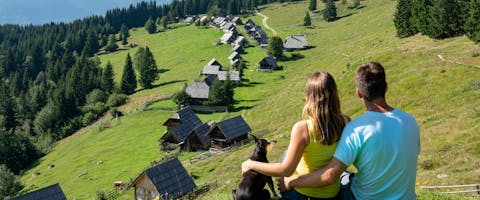Ah, the great outdoors! For those seeking fresh air and peace of mind, nothing quite beats house-sitting in a rural area. Surrounded by rolling hills and greenery in the company of some country-seasoned pets, it could almost be like a fairytale. But, what are the realities of living in a rural area? How different is it from a city sits and urban areas?
Well, we’ve done the head-scratching for you to answer a few countryside queries for those who are more city dwellers than wellie-wearing field enthusiasts. So, buckle up those boots, and roll up those walking socks, it’s time to learn more about pet-sitting in rural areas.
Trending posts
Purr-use some of the top blogs our members have been loving this month- Top male dog names for your new furry friendGot a new furry family member in your pack? Check…

- Top female dog names for your new fluffy palWelcoming a new pooch into your family? Explore…

- 120+ gray cat names your silver feline will loveRecently welcomed a fluffy gray bundle of joy into…

- What are normal pet sitting rates?Discover the average pet sitting rates for animals…

- Unique dog names to stand out from the packDare to be different with our list of the best…

What is a rural area?
What a great question to start with, and a sensible one at that! Turns out there are loads of governing bodies and charities that have their own very specific definition for rural areas. For us TrustedHousesitter folk we found this one-line summary from UNESCO’s Institute of Statistics:
“A rural area can be considered as a geographical region outside the urban agglomeration.”
Basically, a house is in a rural area if it’s in a sparsely populated community with a limited number of resources surrounded by remote countryside areas. Of course, for some rural homes, this can be rather obvious, particularly if it’s the only house in several miles.
How can sitters connect with local rural communities?
Connecting with local rural communities is a vital part of living in a rural home. Even for those who are only pet-sitting for a few days, it’s important to know who your neighbors are. Not only will they be keen to meet a new face in the community, but this also acts as a point of safety for you and your new fur friends. Remote living and rural areas can be far away from the emergency services (for both pets and humans) with limited cell signal. By familiarizing yourself with the rural community, you’ll know who to go to in case something happens.
Similarly, it’s an excellent way of integrating into country life. Some communities have regular events going on which can be fun to attend and paw-some way to meet new people.
Tips for living in a rural area
Know how to care for outdoor animals
House-sitting in a rural area may include caring for a few outdoor animals. Perhaps you’ve snapped up a sit on a farmhouse or a country cottage with a few farm animals in tow? Make sure you know whether you’re looking after just claws and paws, or if there are a few hoove cloppers or pig trotters who’ll need your attention too.
Familiarize yourself with the local countryside areas
For safety's sake, and the purpose of future adventure, make sure you know the lay of the land. If you’re about to leave for a dog walk or hike, make sure you’ve downloaded a local map to access offline. Keep a small stash of supplies on you - water, portable battery, snacks - in case you run into any issues.
Some pet parents might even be able to lend you a map if you fancy some old-school orienteering. Now, when was the last time you looked at a physical paper map?
What to do in case of an emergency
Before the pet parents leave, double-check check you have all the contact details for the emergency services and neighbors. We don’t just mean the cops or ambulance services, but also the local electrician and plumber. As glorious as rural areas are, they suddenly become a lot less fun if the water won’t turn on and the heating is broken.
In addition to a list of all those lovely contact details, ask if there’s a first aid kit in the house and where to find it, whether they have any other safety features, and all details on their fur family’s vet details.
Can you house-sit in a rural area without a car?
Physically, you can of course pet sit without a car, however, you may find you’re rather stranded in some rural areas without the means of transport. A taxi or bus may be able to take you from the train station or airport, but local rural taxi services are far more limited and not on Uber or Lyft.
If you’re set on sitting in total isolation - whether it be for your mental health or to try out a new lifestyle - be sure to run this past the pet parents first. If they’re happy for you to house sit without a car, make sure you have all the contact details of emergency services and neighbors, you know where the nearest vet and hospitals are, and all the details on public and private transport.
Looking to soak up some fresh country air in a rural area house-sit? Have a look at what’s currently available and the types of pets you could cuddle and care for. Found the paw-fect sit? If you’re not a member already, become part of our pet-loving community - we have a few different pricing options to suit your next adventure.

